
Figure 1. Metamaterial Antenna
Metamaterials are artificial structures and their electromagnetic properties are not present in nature. Employing metamaterials in microstrip antenna substrate will result in the improvement of the antenna parameters like bandwidth, gain, efficiency, etc. A novel design of metamaterial is considered in order to miniaturize a circular microstrip patch antenna. Metamaterial is composed of two nested split hexagons and it is located on a 10 x 10 mm Rogers RT/duroid 5880 substrate with 0.7874 mm thickness and dielectric constant value of 2.2. Here 4 x 4 array of such nested split hexagons is placed on the patch antenna substrate. By using the metamaterial in the antenna structure, the dimension of this proposed antenna is reduced to both half and quadrature compared to a microstrip patch antenna. Here the circular patch antennas loaded by an homogeneous substrate partially filled with negative metamaterials. Metamaterial is preferred because it supports a resounding radiating mode, even if the total size of the radiator is significantly smaller than the wavelength of operation. Here HFSS Software is used for simulation.
Communications, technology and biomedical sensors offer services for the patient's vital signs to be monitored outside the clinical environment. The demand for the implantable telecommunication devices in medical applications has been growing very rapidly over the past decade. Microwave antennas and biomedical sensors are the major components of telemetry systems linked to medical applications. Biomedical engineering plays an important role like improving medical diagnosis and treatment, as an academic regulation. Now-a-days, glucose monitoring, insulin pumps, deep brain simulations, and endoscopy are a few examples of the medical applications and it is used for remote monitoring system and body implantable unit. Body implantable devices are generally researched for humans, such as monitoring blood pressure and temperature, tracking dependent people or lost pets, wirelessly transferring diagnostic information from an electronic device implanted in the human body for human care and safety, such as a pacemaker, to an exterior RF receiver. Antennas can be implanted into human bodies or skin-fat-muscle to shape a bio-communication system between medical devices and external instruments for short range biotelemetry applications. Remote monitoring systems facilitate the analysis of diseases and it favors the hospital at home by reducing the hospitalization period.
Nowadays, the demand for the deployment of wireless telemetry systems in medicine has significantly increased due to necessity for early diagnosis of diseases and continuous monitoring of physiological parameters. Microwave antennas and sensors are key components of these telemetry systems since they provide communication between the patient and base station [12]. An antenna is a transmitter which converts electrical signal into electromagnetic waves, and also it radiates into the space. The microstrip antenna have many features like low weight, light cost, low profile, etc. It has both advantages and disadvantages, one of the disadvantages is narrow bandwidth [6]. The microstrip antennas are used in many applications like - satellite communications, remote sensing, biomedical applications, etc.
Small size antenna plays an important role in many aspects like in mobile phones. There are several techniques to miniaturize the size of an antenna with high dielectric substrate, DGS, slotted, and meandering techniques [3, 4]. In this paper, the size of antenna is miniaturized with metamaterial approach.
Metamaterials (Meta means "beyond" in Greek) usually gain their properties from structure rather than composition [1]. Here all natural materials are glass, diamond and it has both positive electric permittivity (∈ ) and magnetic permeability (μ), with which are can't reduce the size of an antenna and so meta material is used that has both negative electric permittivity (∈ ) and magnetic permeability (μ). The periodic array of copper wires with specific radius and spacing produces negative electric permittivity (∈). Periodic array of split ring resonator has negative μ. The metamaterial was fabricated by interleaving SRR and copper wires [7].
Metamaterials are a new design methodology and it is mainly used in medical applications like diagnosis of cancer cells, Cancer treatment, patient monitoring, brain signal analysis, body temperature, blood pressure monitoring, etc [2, 8]. Here, 2 x 2 array of hexagonal shaped split ring resonator slots on dielectric substrate, are used, which acts as a metamaterial and it is placed at ground to reduce the back wave propagation that harms the patient’s body tissues. The hexagonal split ring resonator slots placed in dielectric substrate [5] that acts as a metamaterial antenna is shown in Figure 1.

Figure 1. Metamaterial Antenna
To design a miniaturized antenna with metamaterial for biomedical applications. The main aim of this project is to reduce the size of antenna with metamaterial, whatever the large antenna takes as information, in the same way the small size antenna has to receive. Here the small antenna to be implanted in the human body should not affect the tissues and so a split ring resonator is placed in the dielectric substrate that acts as a metamaterial. Then size is reduced and when the back wave propagation reduces, the radiation starts also reducing. We can't reduce the overall radiation, but by using a split ring resonator, the radiations can be reduced to some extent.
Using metamaterial we can reduce the antenna size λ/15 times. In this project, the antenna size is reduced up to λ/4 times.
To design a rectangular patch antenna using transmission line model, frequency = 2.4 GHz, Dielectric constant (∈r) = 2.2, and Height of substrate=0.7874 mm are needed [9,10].
Equations are taken from [11].
1. Width of the Patch,

where, C = Free space velocity of light.
= 3 x 1010 cm.
∈r = Dielectric Constant of Substrate.
2. Effective dielectric constant of the rectangular microstrip
patch antenna (∈r),
3. Effective length (Leff),

4. Actual length of the patch (L),

5. Calculation of Length Extension,

Ground Plate Calculations:
1. Length (Lg) = 6h+L = 44.12 mm.
2. Width (W) = 6h+W = 53.12mm.
Feed Point Location (x):

where, Rin = Input impedance 50 Ω.

where, Gs = Slot Conductance,
Gm = Mutual Conductance
Re = 200 Ω (approx 199 Ω),
X = 6.70 mm.
The rectangular microstrip patch antenna is designed on Rogers' 5880 substrate. Parameter specifications of rectangular microstrip patch antenna are shown above
HFSS Software is used to design and simulate the Patch antenna. The designed rectangular patch antenna with probe feed is shown in Figure 2.
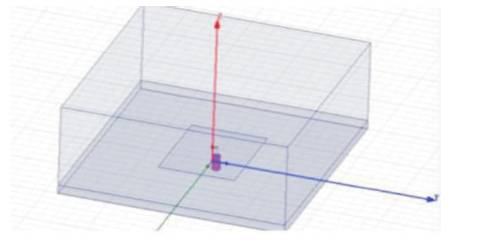
Figure 2. Designed Rectangular Patch Antenna
Circular patch dimensions are obtained by considering half of the diagonal length of rectangular patch. The designed circular patch antenna with probe feed is shown in Figure 3. The radius of patch is 20 mm.

Figure 3. Designed Circular Patch Antenna
Dimensions of hexagonal shape split ring resonator is calculated by using the formulas shown below.
The designed 2x2 array of circular patch antenna is shown in Figure 4.

Figure 4. Designed 2 x 2 Circular Patch Antenna using Metamaterial



By using 2 x 2 hexagonal shape array split ring resonator slots on dielectric substrate, which acts as a metamaterial, the size of antenna is reduced to half.
By using 4 x 4 array hexagonal shape split ring resonator slots on dielectric substrate, which acts as a meta material, the size of antenna is reduced to Quadrature. The designed 4 x 4 array of circular patch antenna using metamaterial is shown in Figure 5.
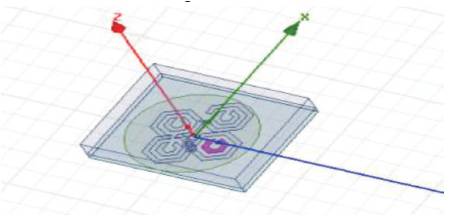
Figure 5. Designed 4 x 4 Circular Patch Antenna using Metamaterial
After simulation, the return loss of rectangular patch antenna is shown in Figure 6. At 2.4 GHz, the obtained return loss is -31.5 dB and Bandwidth=150 MHz.
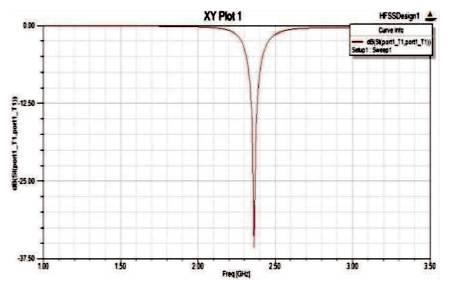
Figure 6. Return Loss for Rectangular Patch Antenna
The simulated gain of the Rectangular patch antenna is 7 dBi as shown in Figure 7.
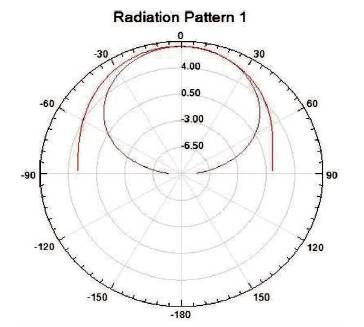
Figure 7. Gain of Rectangular Patch Antenna
After simulation, the return loss of circular patch antenna is shown in Figure 8. At 2.4 GHz, the obtained return loss is - 37.2 dB and Bandwidth=150 MHz.
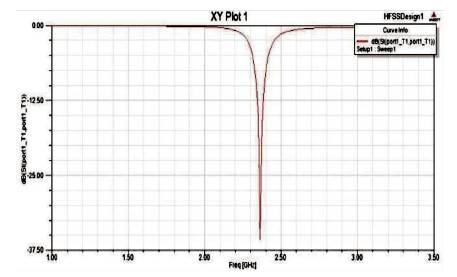
Figure 8. Return Loss of Circular Patch Antenna
The simulated gain of the circular patch antenna is 7 dBi as shown in Figure 9.
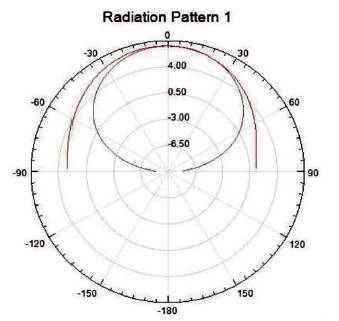
Figure 9. Gain of Circular Patch Antenna
After simulation, the return loss of 2 x 2 array Split Ring Resonator patch antenna is shown in Figure 10. At 2.4 GHz, the obtained return loss is -33 dB and Bandwidth=150 MHz.
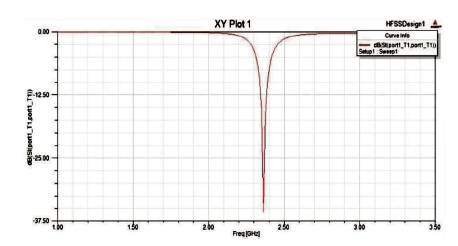
Figure 10. Return Loss of Metamaterial Antenna (2 x 2) Array
The simulated gain of the 2 x 2 array Split Ring Resonator patch antenna is 7 dBi as shown in Figure 11.
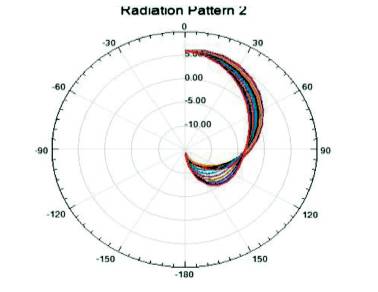
Figure 11. Gain of Metamaterial Antenna (2 x 2) Array
After simulation, the return loss of 4 x 4 array Split Ring Resonator patch antenna is shown in Figure 12. At 2.4 GHz, the obtained return loss is -13.00 dB and Bandwidth=250 MHz.
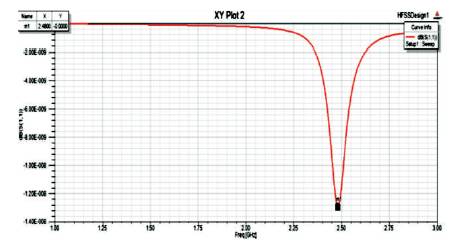
Figure 12. Return Loss of Metamaterial Antenna (4 x 4) Array
The simulated gain of the 4 x 4 array Split Ring Resonator patch antenna is 4 dBi is shown in Figure 13. The results obtained for both Antennas with and without metamaterials are compared in Table 1.
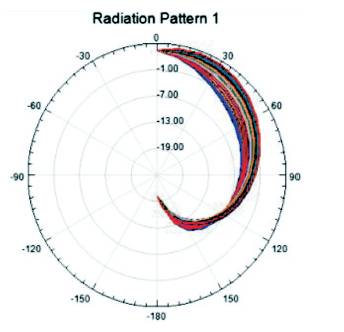
Figure 13. Gain of Metamaterial Antenna (4 x 4) Array
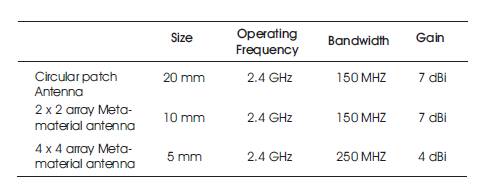
Table 1. Comparison of Results
Hexagonal 2 x 2 and 4 x 4 array split ring resonator patch antenna is designed and simulated using HFSS software and different parameters like return loss, gain are determined at 2.4 GHz frequency band. By using metamaterial in antenna design, the size of antenna is reduced. The proposed antenna have achieved better gain and satisfied return loss. The simulated results show that the obtained impedance bandwidth 150 MHz for 2 x 2 array and 250 MHz for 4 x 4 array. So, these antennas can be used in biomedical applications. The main aim is to miniaturize the size of an antenna l/2 and l/4 times and it is reduced by cutting dielectric with hexagonal shape split ring resonator that acts as a Metamaterial and it has reduced the size to half and quadrature.
The gain of the antenna can be additionally increased by designing higher order 8 x 8 array hexagonal shape split ring resonator slots on dielectric substrate, which acts as metamaterial, the size of antenna can be reduced, and the parameters like gain, return loss, and bandwidth can be increased. In present work, microstrip patch antenna was designed using Rogers' 5800 substrate. In future, the size of the antenna can be reduced for better results.